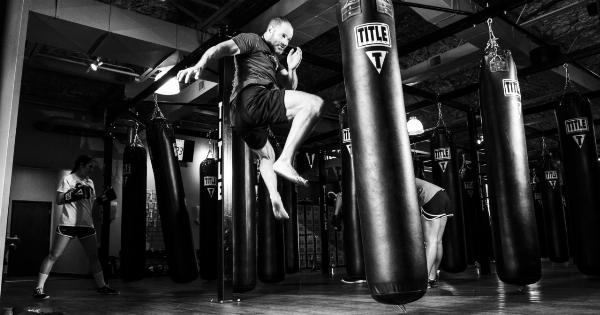Exercise is a vital part of an individual’s daily routine. It is essential not only for physical fitness but also for maintaining overall body function and well-being.
Participating in exercise is an excellent test of physical endurance as it requires an individual to engage in physical activity that increases their heart rate, breathing rate, and overall body movement. This article explores the nature of exercise as a test of physical endurance, the benefits of regular exercise, and the types of exercise that can be used to improve physical fitness and endurance.
What is physical endurance?
Physical endurance is the ability of an individual’s body to sustain work and resist fatigue over an extended period. Physical endurance is commonly tested through the measurement of cardiovascular endurance, muscular endurance, and flexibility.
Cardiovascular endurance measures an individual’s ability to perform sustained activities that involve large muscle groups, such as running or cycling. Muscular endurance measures the ability of an individual’s muscles to perform repetitive actions, such as weightlifting or push-ups.
Flexibility measures the range of motion of an individual’s joints and is commonly tested through activities such as stretching or yoga.
The Benefits of Exercise for Physical Endurance
Regular exercise has been shown to have multiple benefits for physical endurance. Participating in exercise increases cardiovascular endurance by improving heart function, reducing blood pressure, and increasing lung capacity.
Exercise also improves muscular endurance by strengthening individual muscle groups and improving overall muscle function. Additionally, exercise improves flexibility by improving the range of motion of individual joints.
This increased physical fitness and endurance can lead to improved overall health, increased energy levels, and a reduced risk of chronic diseases such as obesity, heart disease, and diabetes.
Types of Exercises to Improve Physical Endurance
There are several types of exercise that can be used to improve physical endurance. The most common types of exercise include aerobic exercise, anaerobic exercise, and flexibility training.
Aerobic exercise involves sustained activities that increase heart rate and breathing rate, such as running, cycling, or dancing. Anaerobic exercise involves short bursts of intense activity that build individual muscle groups, such as weightlifting or sprinting. Flexibility training involves activities that improve joint range of motion, such as yoga or stretching.
Incorporating a combination of these exercises into a regular fitness routine can provide a comprehensive workout that improves physical endurance and overall body function.
Challenges to Improving Physical Endurance
Improving physical endurance through exercise can be challenging, particularly for individuals who are starting from a low level of fitness. Common challenges include a lack of motivation, feeling overwhelmed, and a fear of injury.
It is essential to start slow and gradually increase the intensity and duration of exercise. Additionally, seeking guidance from a personal trainer or healthcare professional can provide guidance and support for individuals looking to improve their physical endurance.
How to Incorporate Exercise into Daily Life
Incorporating exercise into daily life can be challenging, particularly for individuals with busy schedules. However, there are several ways to make exercise a regular part of daily life.
This can include prioritizing exercise by setting aside time each day for physical activity, joining a gym or fitness center, or finding a workout buddy for added motivation. Additionally, incorporating physical activity into daily routines, such as walking or biking to work, can provide additional opportunities for exercise.
With dedication and consistency, exercise can become a vital part of an individual’s daily routine and contribute to improved physical endurance and overall health.
Tips for Maintaining Exercise Habits
Maintaining exercise habits can be challenging, particularly for individuals with busy schedules and varied demands on their time. However, several tips can help individuals maintain exercise habits and improve their physical endurance.
This includes setting measurable goals, such as increasing the duration or intensity of exercise each week, and celebrating small accomplishments along the way. Additionally, finding enjoyable forms of exercise can make it easier to stay motivated, such as participating in group exercise classes or trying new activities.
Finally, prioritizing rest and recovery is essential to preventing injury and avoiding burnout. Taking rest days or incorporating low-intensity workouts can provide necessary recovery time while still maintaining regular exercise habits.
The Bottom Line
Exercise is an excellent test of physical endurance that can provide numerous benefits for overall health and well-being.
Regular exercise improves cardiovascular endurance, muscular endurance, and flexibility, leading to better physical fitness and resistance to chronic diseases. However, maintaining regular exercise habits can be challenging, requiring dedication, consistency, and a focus on individual goals and interests.
By incorporating exercise into daily routines and prioritizing rest and recovery, individuals can improve their physical endurance and enjoy the many benefits of regular exercise.


























